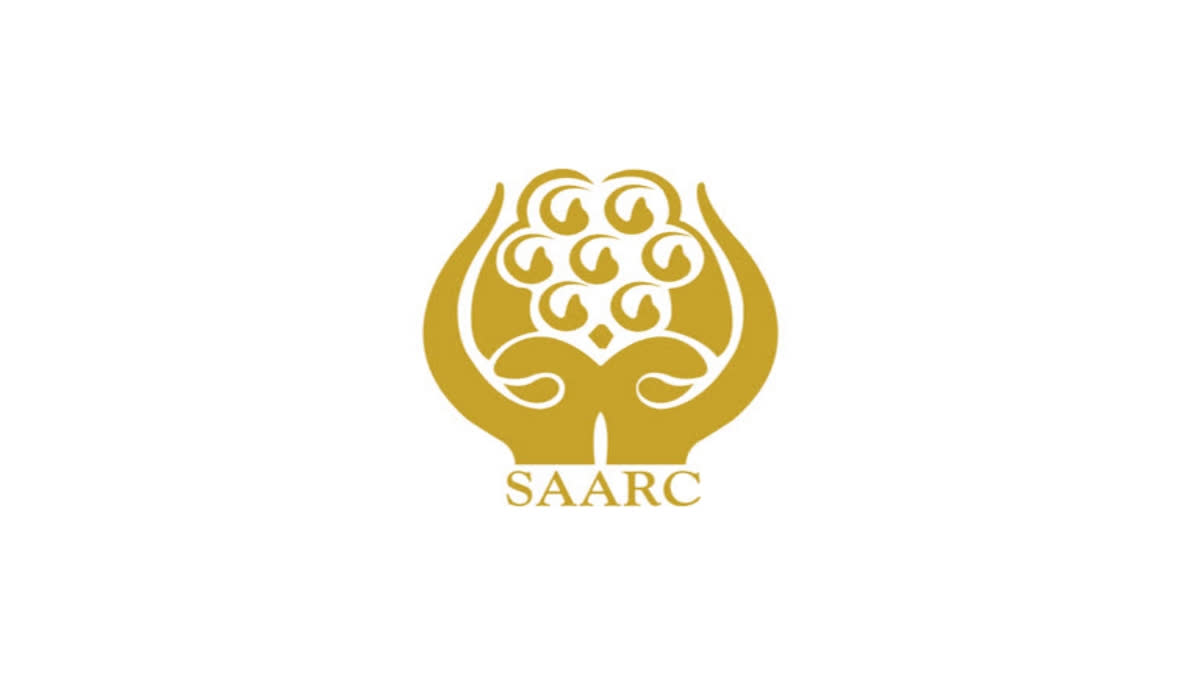New Delhi: Nepal Foreign Minister NP Saud has said that efforts are on to make the South Asian Association of Regional Cooperation (SAARC) dynamic again. "During the upcoming United Nations General Assembly, though informally, a meeting of foreign ministers of SAARC nations will be held and discussions will be held on the dynamics and revival of SAARC," The Himalayan Times quoted Saud as telling the International Relations and Tourism Committee of the Himalayan nation’s House of Representatives.
This comes after the appointment of Mohammed Golam Sarwar, a career diplomat of Bangladesh, as the new Secretary-General of SAARC last month. The SAARC Secretariat is housed in Nepal’s capital Kathmandu.
The SAARC is a regional intergovernmental organization and geopolitical union of states in South Asia. Its member states are Afghanistan, Bangladesh, Bhutan, India, Maldives, Nepal, Pakistan, and Sri Lanka. The SAARC comprises three percent of the world's land area, 21 percent of the world's population and 5.21 percent ($4.47 trillion) of the global economy as of 2021.
The SAARC was founded in Dhaka on December 8, 1985. The organization promotes economic development and regional integration. It launched the South Asian Free Trade Area in 2006. It maintains permanent diplomatic relations at the United Nations as an observer and has developed links with multilateral entities, including the European Union.
However, following the geopolitical conflict between India and Pakistan that was sparked by the 2016 terror attack on an Indian Army camp in Uri from Pakistani soil, the functioning of SAARC has been suspended in recent years. India boycotted the SAARC Summit that was scheduled to be held in Islamabad in November 2016 following the Uri attack. Afghanistan, Bangladesh and Bhutan too followed suit. Since then, no SAARC summit has been held till now.
Also read: Putting SAARC on back burner, India vows to strengthen BIMSTEC
In June this year, External Affairs Minister S Jaishankar made it clear that India cannot have a SAARC meeting until one member continues to engage in terror acts. He added that India would not tolerate a scenario wherein “terrorism happens by night and trade happens by day”.
"You have not heard very much about SAARC because, in the last few years, there isn't very much to hear about,” Jaishankar was quoted as saying by ANI news agency. “We have not had meetings because you have a member of SAARC who doesn't conform to all the basic requirements of what a good membership is, and that is today an obstacle reality for the SAARC to meet. You know I said we cannot continue with acts of terrorism and say the cooperation will continue to happen nevertheless.”
With the relevance of SAARC fading into oblivion, India has started engaging more with the Bay of Bengal Initiative for Multi-Sectoral Technical and Economic Cooperation (BIMSTEC) sub-regional group. The BIMSTEC, which came into existence in 1997, comprises seven countries lying in the littoral and adjacent areas of the Bay of Bengal – Bangladesh, Bhutan, India, Myanmar, Nepal, Sri Lanka and Thailand.
Membership in the bloc allows India to engage more with the extended neighbourhood in Southeast Asia under New Delhi's Neighbourhood First Policy. The BIMSTEC countries are home to 1.73 billion people and have a combined gross domestic product of $4.4 trillion as of 2022.
In fact, last month, Thailand hosted the inaugural BIMSTEC Foreign Ministers’ Retreat in Bangkok, in which the seven BIMSTEC members expressed their renewed resolve to build a stronger, more resilient, and more relevant grouping. The BIMSTEC member states have also agreed to meet on the sidelines of the UN General Assembly next month.
So is it possible to make the SAARC regional bloc dynamic again as Nepal Foreign Minister Saud suggested?
“See, the world has changed,” Prabir De, a scholar on South Asian affairs, explained to ETV Bharat. “The SAARC was formed in 1985. Today, the world has become multipolar and the challenges are different. Sub-regional groups like BIMSTEC have become more important. We are talking about digital linkages and supply chain management here. Supply chain management has become more important after the COVID-19 pandemic.”
However, De said that an informal meeting of SAARC member states “is always good” and added that Saud made an “honest call”.
“The SAARC has a high potential for building trade and investment,” he said. “But the differences between India and Pakistan are too deep-rooted. To revive the SAARC process, Pakistan has to show greater intent.”
Also read: Sri Lanka to return Indian prisoners under SAARC prisoner exchange agreement



